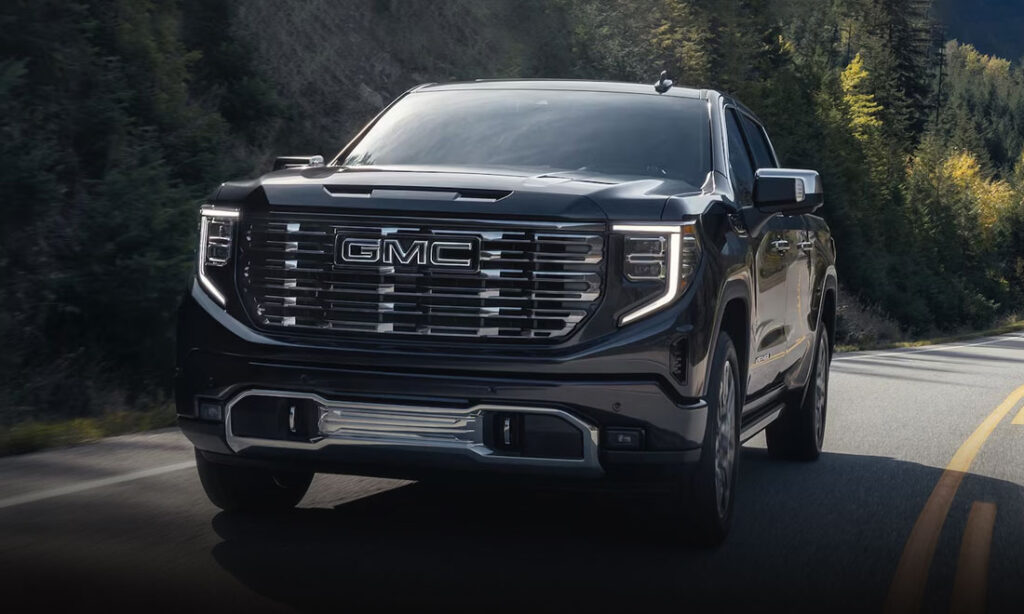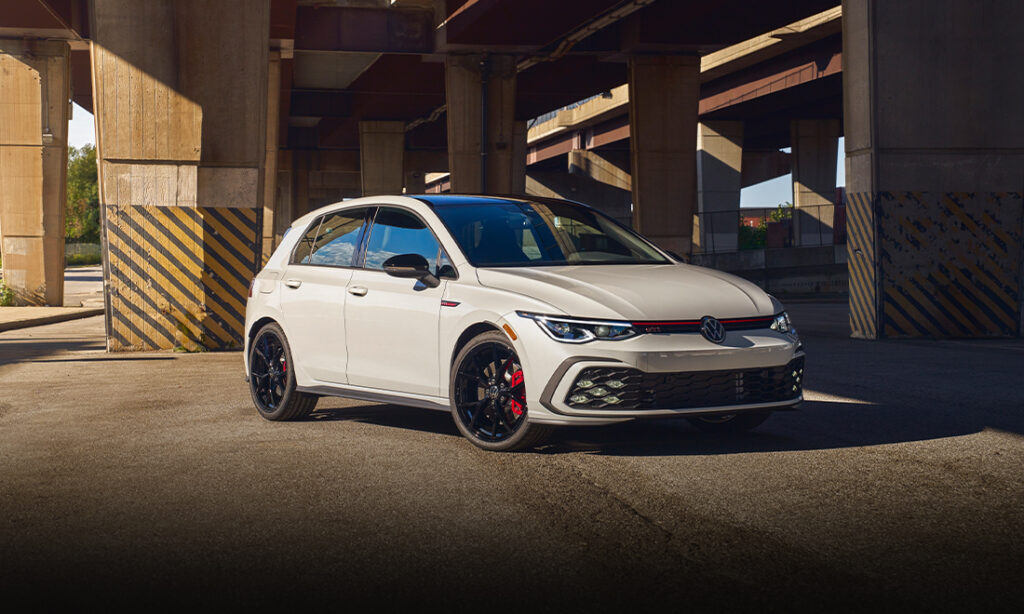Retro Review: ’64 ½ Ford Mustang
The ’64 ½ Mustang set the stage for decades of dominance on the drag strip, racetrack, and showroom floor.
The Not-So-Humble Beginnings of the Ford Mustang

1964 ½ Ford Mustang – netcarshow.com | Shop 1964 ½ Ford Mustang on Carsforsale.com
There are rare moments in automotive history when the business interests of carmakers and the hopes and desires of car lovers coincide. Think Japan’s domestic market in the 1990s, the Porsche 911 of the 1970s, the chrome-and-fins era of the 1950s, or really the entire history of the Miata. As great as those moments and those cars were, nothing compares to the mid-to-late 1960s when Detroit was shipping out future classic after future classic, capturing the imaginations (and dollars) of a generation of enthusiasts and laying down a legacy that would inspire generations of car fans to come.
And among those classic pony cars and muscle cars, the top of the heap, the archetypal-prototypical-Platonic ideal has always been the Ford Mustang. The Barracuda might have beat the Mustang to market by a scant two weeks, making it the first pony car, but the new Ford instantly eclipsed the Plymouth, on its first day on sale.
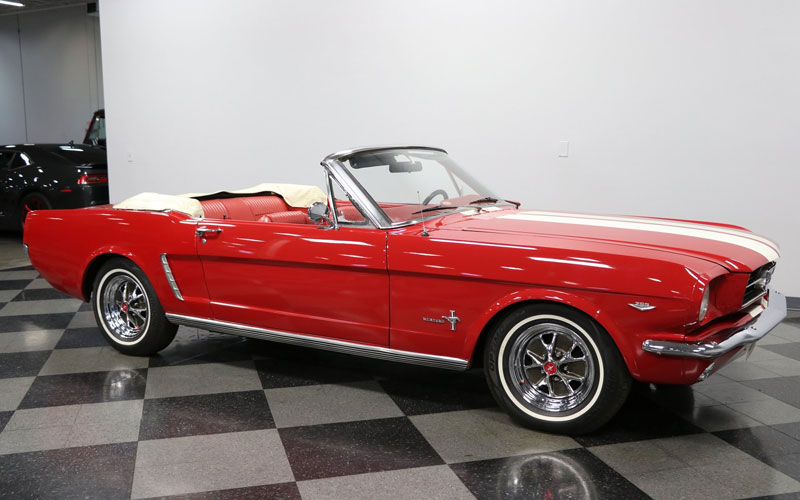
Lee Iacocca and company had seen the market was ripe for an affordable sports car for young baby boomers, rushing the Mustang through a brief 18-month development and releasing the new car in the spring of 1964. The timing, prior to the typical fall release time, lead owners of those first Mustangs to dub them ’64 ½ Mustangs. Today, we will look back at those ’64 ½ Mustangs, and trace its early evolution through its first year and a half of production.
Development & Release

The Mustang began as a glimmer in the eye of Lee Iacocca, Ford division vice president, in the early 1960s. Iacocca felt the market was ripe for a sporty car in the vein of European grand tourers aimed at the youth market, a sizeable demographic indeed as the baby boomer generation was aging into their drivers’ licenses and enough buying power to purchase their first cars. The goal was to produce a car that weighed under 2,500 lbs and cost less than $2,500, in other words a light, sporty car for the masses. But Iacocca knew GM and Chrysler would be hot on their heels and set an ambitious timeline of just 18 months from concept to production.
The T-5 project, as it was called internally, began with prototypes like a two-seat rear engine design driven by Dan Gurney at Watkin’s Glen in 1962. Eventually, financial practicalities won out and the Ford Falcon’s platform was chosen as the basis for the new car, now a two-door 2+2. The car’s design would be pivotal to its youth market appeal. Ford had three design teams, the Ford Studio, the Lincoln-Mercury Studio, and the Advanced Products Studio each submitting designs for the new car, now known as the Special Falcon project. The winning design came from the Ford group headed by Joe Oros. The name for the car was contributed by Ford stylist John Naijar who gave it the Mustang name after the WWII fighter plane, the P-51 Mustang.
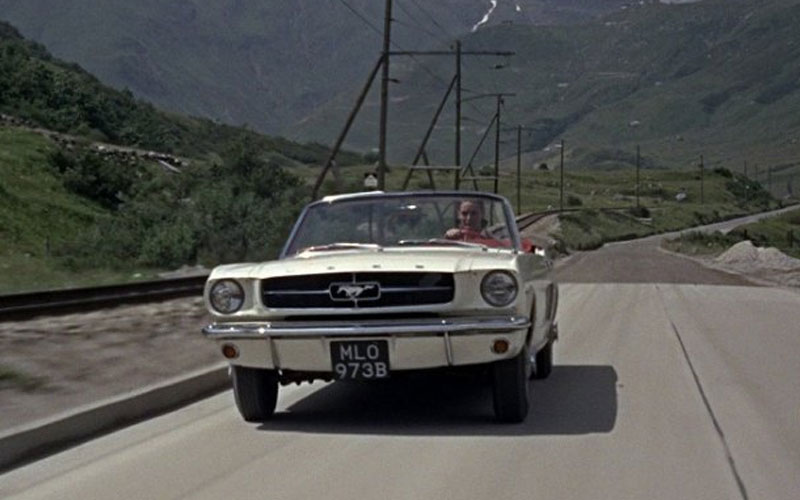
Ford built hype for the car by buying time on three major television networks prior to its official debut in April of 1964 at the World’s Fair in New York. The debut coincided with unveilings at dealerships across the country and the Mustang sold 22,000 units in its first day. The new Mustang was a bona fide hit, making the covers of Time and Newsweek magazines, and the Mustang was used as the pace car for that year’s Indy 500. Sales really took off after the Mustang was featured in the new 1964 Bond flick Goldfinger. The Mustang would go on to sell 400,000 units in its first year and take less than two years to hit 1 million units and $1 billion dollars in sales. (Two bits of trivia for you, the millionth Mustang was a white convertible and the next Bond movie, Thunderball, also featured a Mustang, driven by villainess Fiona Volpe.)
’64 ½ Mustang

Because the Mustang was rushed to market as soon as possible, its spring debut was ahead of the usual fall release schedule. Ford officially referred to these early Mustangs as 1965 models, but owners and aficionados have long referred to them as 64 ½ models, as they differ from those August 1964 and later cars aka true ‘65 Mustangs.
The ’64 ½ Mustang was a hardtop or convertible and offered the choice of three engines. The base engine was a 170 cu-in “Thriftpower” inline-six with 101 horsepower, and Mustangs thus equipped were derided as “secretaries’ cars.” Even so, the base price of just $2,368 was enticing enough to ship a lot of six-cylinder Mustangs. Up from there were the 260 cu-in V8 with 164 horsepower and the “D-code” 289 cu-in V8 with 210 horsepower. A “K-code” HiPo version of the 289 was also available with upgraded camshafts and crankshaft, a different exhaust manifold, and different fuel and water pumps. Those upgrades had the HiPo V8 Mustang making 271 horsepower. Three- and four-speed manual transmissions were offered along with a three-speed automatic. Options included a limited-slip differential, AM radio, night/day mirror, wire wheels, a vinyl roof, two-speed wipers, and a handling package that re-tuned the shocks, springs, and sway bar.
’65 Mustang
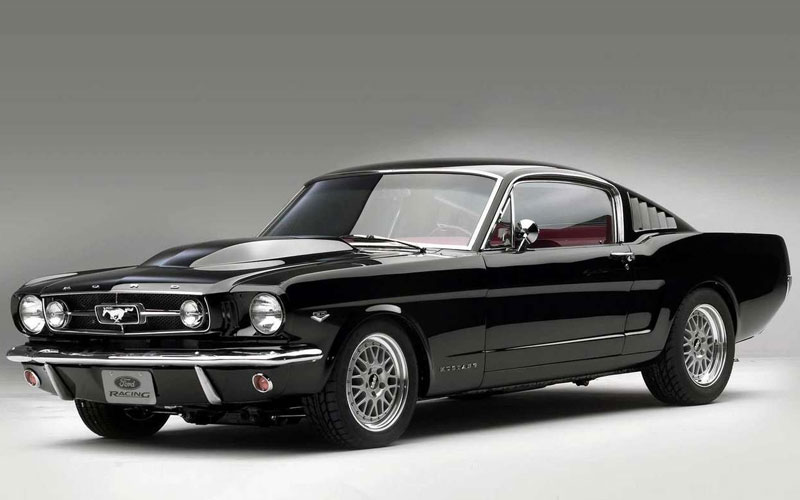
The change over to the “real” 1965 model year in August of 1964 marked several updates and revisions to the Mustang. First, a new body style, the fastback, was added as well as additional interior options. New engines were also in the mix as a 200 cu-in straight-six came in. The 260 cu-in V8 was dropped for a new “C-code” 289 cu-in V8 that made 200 horsepower. An “A-code” version of that V8 ran a four-barrel carburetor upping output to 225 horsepower. The “K-code” HiPo V8 also remained an option. The generator used in the 64 ½ was replaced by an alternator. A GT Equipment Package added yellow fog lamps, rocker panel stripes, disc brakes, and a five-gauge instrument panel.
The Mustang also got its first of many variants when Ford asked Carroll Shelby, recently of their Ford GT project, to give the new car some real teeth for racing the SCCA B-Production group. Thus was born the Shelby GT350. Shelby tuned the Mustang’s 289 HiPo V8, adding a four-barrel Holley carburetor to coax 306 horsepower and 329 lb-ft of torque from the engine. The cars were modified at Shelby American and given new headers and front disc brakes and deleting the rear seats for weight savings. All 521 GT350s built that year came in Wimbledon White with Guardsman Blue rocker stripes (the prominent Le Mans running front to back were a rarer factory option often added by dealerships). Shelby’s first Mustang was a doozy, racking up racing wins and igniting a legend, the Shelby Mustang, that endures today.

1965 Mustang Shelby GT350 – netcarshow.com | Shop 1964 ½ Ford Mustang on Carsforsale.com
As for the ’64 ½ Mustang, it helped spark the boom in pony and muscle cars, one of the rare times when carmakers built exactly what we were asking for.


